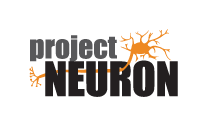Students from the University of Illinois returned to the Don Moyer Boys and Girls Club on April 1st 2011 to continue its neuroscience outreach effort. The University of Illinois Undergraduate Neuroscience Society developed neuroscience workshops for K-5 students at the Don Moyer Boys and Girls Club. These activities were designed to teach the young students about how our brains perceive the surrounding environment and methods we can use to trick our brains perception.
The event was a collaborative effort from Project NEURON and its many talented volunteers. The activities were presented by undergraduate students from the Undergraduate Neuroscience Society, graduate students from the college of Education and the Neuroscience program, and post-doctoral students. In several of the activities, the young K-5 students were challenged to understand the relationship between expectations and perception. In these tasks the young students were asked to distinguish between seemingly easy choices. The young students compared diced apples and potatoes without the use of smell; they taste tested flavored liquid dyed in various shades of color to determine both the identity of the flavor and which had the richest flavor. In a similar task the students tasted the liquid dyed an unexpected color and were challenged to determine the identity of the flavor. Without realizing, the students used the taste, the smell, and the physical appearance (i.e. color) of the liquid to logically assess its flavor. The color created expectations about the liquids flavor. These expectations did not necessarily agree with its taste and smell. So while the liquid appeared purple, the taste and smell may have suggested an orange or cherry flavor. The interactions between these senses influence our perception of flavor. The challenge in the task was to balance the cues from these senses to determine the flavor of the liquid. The young students learned that their expectations of the environment can have strong influences on its perception.
Other activities demonstrated classic brainteasers such as the Stroop effect. The Stroop effect challenged the students to filter information as it is presented to them. The students were shown two lists of colors written in either the same or another colors, such as the word red in red font for the first list or orange in green font for the second. The students were timed and were challenged to read the color of the font but not the word out loud. The students were able to recite the colors of the first list with ease. The second list, however, proved more difficult than the students might have expected. The frequent interactions between the five senses allow information to be taken in as layers. The challenge in this task was to filter out the relevant information in order to create their response. In the first list, the relevant information agreed with their expectations, i.e. the color red was written in red font. But the second list took advantage of these expectations and presented the young students with two color cues instead of one. This made it difficult for the students to filter out the relevant information in place of their expectations. The students learned that they constantly take in and process more information than they might have realized. The students also enjoyed solving and creating their own Rebus puzzles. These puzzles use pictures to convey phrases such as mind over matter, and challenged the students to think creatively to solve them.
The young students were both entertained and engaged by the neuroscience activities, 8 in total, presented by the University of Illinois students. Each activity demonstrated a unique aspect of perception and showcased ways we can trick our brains. Future outreach events organized by Project Neuron will continue to emphasize informative and interesting scientific activities presented in an approachable and engaging manner.

